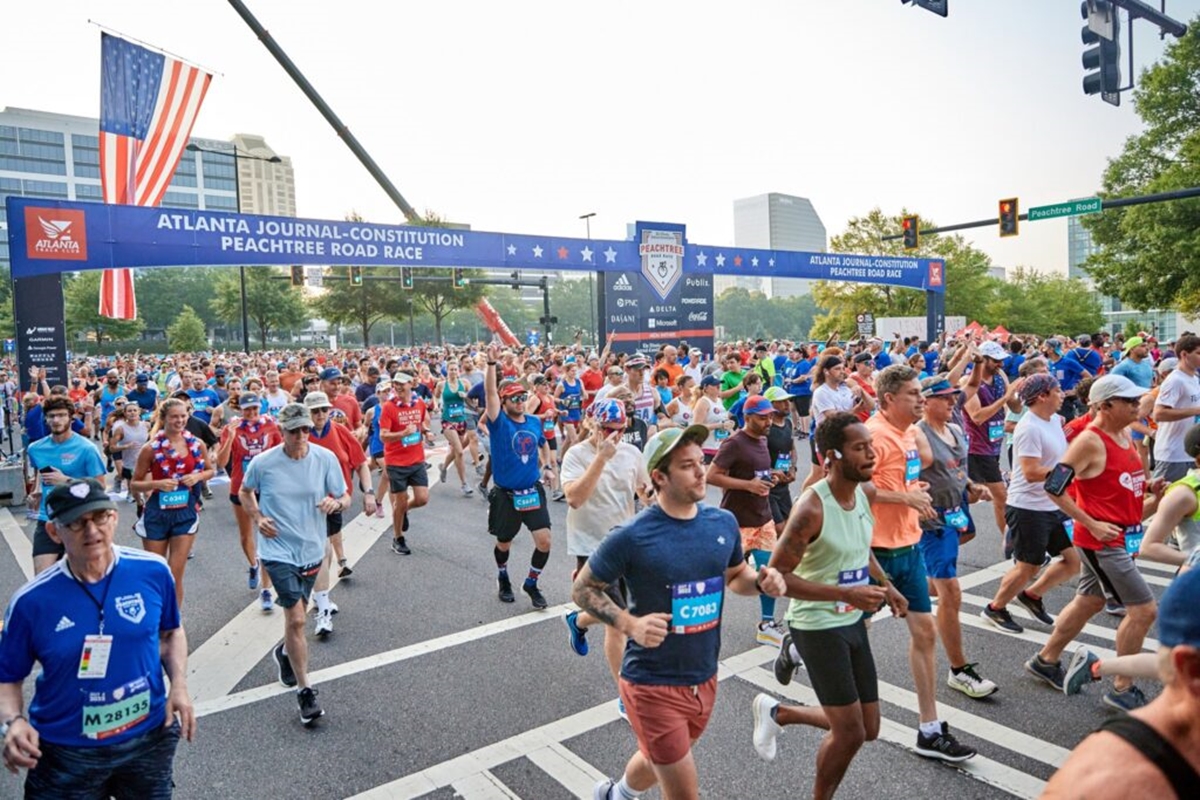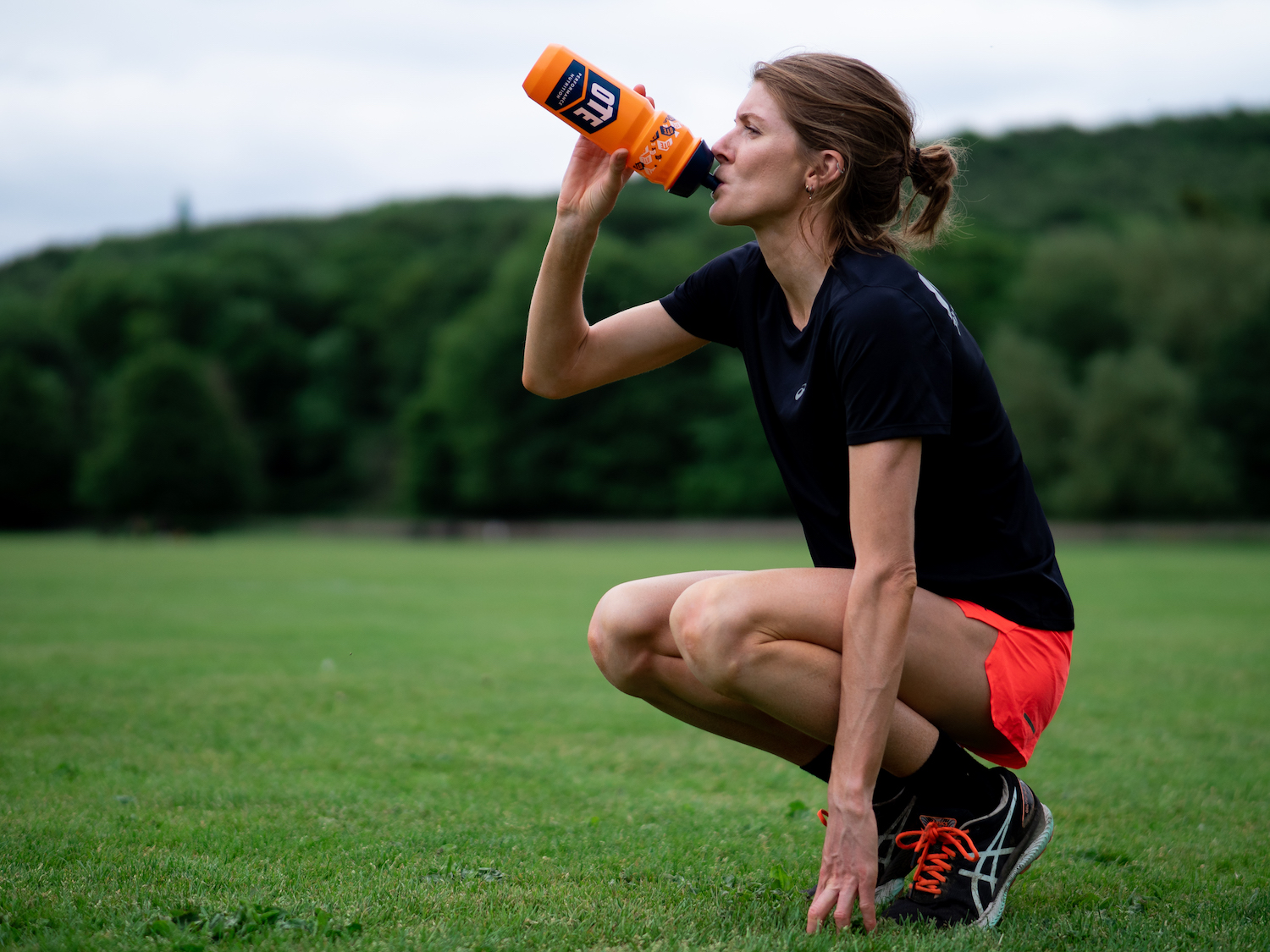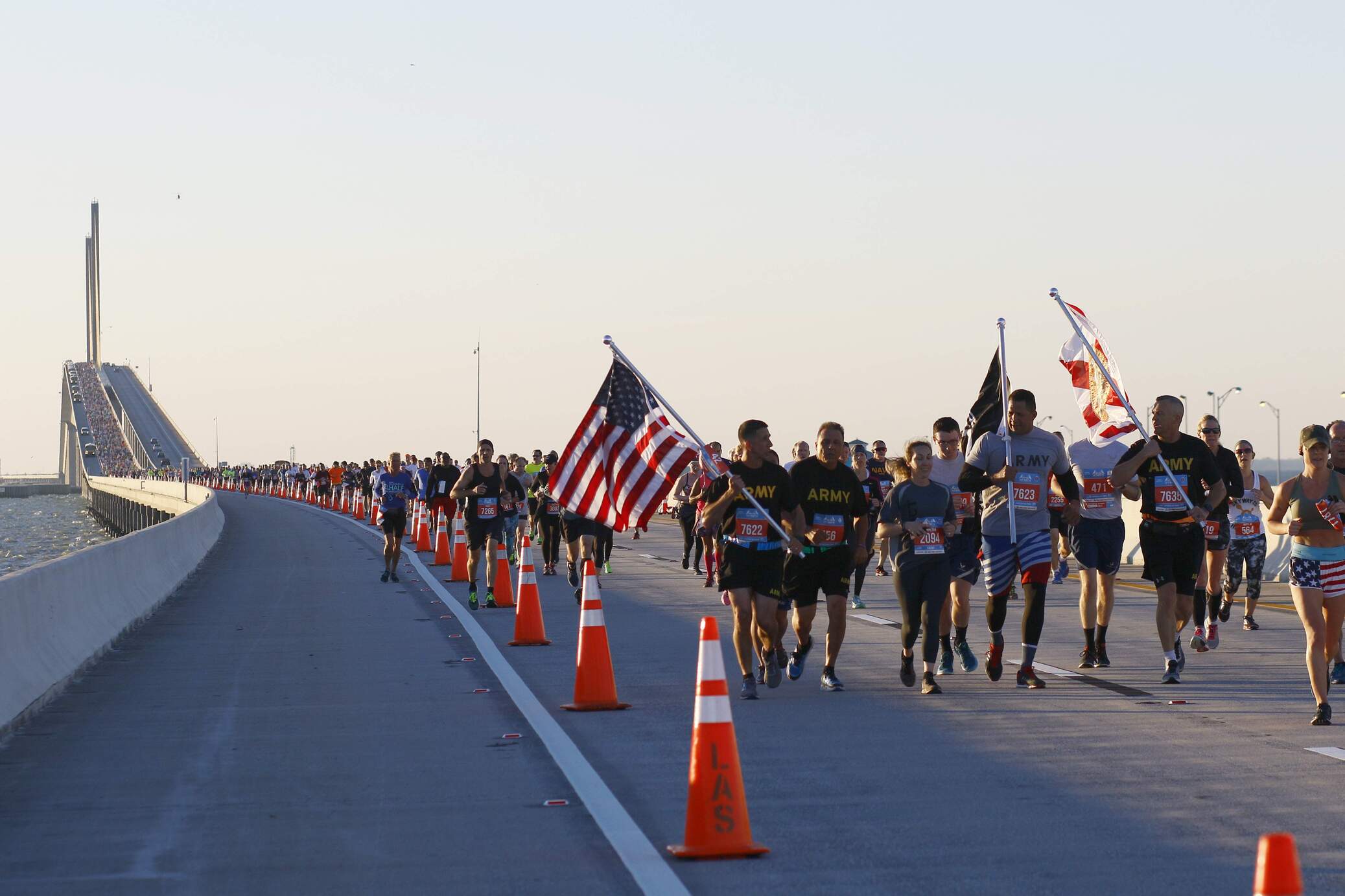

Featured
What Is A 10K Run In Miles
Modified: January 2, 2024
Featured: Discover what a 10K run is in miles and how it compares to other popular race distances. Find out how this distance can challenge and inspire runners of all levels.
Introduction
Welcome to the world of running, where you can challenge yourself, push your limits, and embrace the incredible feeling of crossing the finish line. If you’ve heard about a 10K run and are curious about what it entails, you’re in the right place. In this article, we’ll explore the definition of a 10K run and unravel the mystery of how it translates to miles.
Running has gained immense popularity in recent years, with people of all ages and fitness levels embracing this accessible and invigorating form of exercise. Whether you’re a seasoned runner looking to explore new distances or a beginner taking their first strides into the world of running, the 10K run is a milestone worth considering.
A 10K run, also known as a 10 kilometer run, is a common distance for organized road races and fun runs. It is often seen as an ideal challenge for both intermediate and experienced runners. Completing a 10K run requires commitment, training, and perseverance, but the sense of accomplishment and fulfillment you experience at the finish line makes it all worthwhile.
So, you might be wondering, how does a 10K run translate to miles? In most parts of the world, a 10K run is equivalent to approximately 6.2 miles. This distance provides a moderate challenge, allowing runners to push themselves without being too overwhelming. Whether you’re aiming for a personal best or simply looking to enjoy the journey, a 10K run is an excellent choice.
As you embark on your journey to conquer a 10K run, it’s important to recognize the numerous benefits that this distance offers. From improving cardiovascular health and strengthening muscles to boosting mental well-being and fostering a sense of community, the advantages of running a 10K are countless. Additionally, it serves as a stepping stone to longer distances such as half marathons and marathons, should you choose to pursue them in the future.
Definition of a 10K Run
Before delving into the details of a 10K run, let’s start by understanding what it actually means. A 10K run refers to a road race or fun run that covers a distance of 10 kilometers. In the metric system, a kilometer (km) is equivalent to 0.62 of a mile. Therefore, a 10K run is approximately 6.2 miles long.
A 10K run is a popular distance in the running community and is widely recognized as a stepping stone between shorter races, such as 5Ks (3.1 miles), and longer endurance races like half marathons (13.1 miles) and marathons (26.2 miles). It provides runners with an opportunity to challenge themselves and test their physical and mental limits.
Typically, a 10K run takes place on a road or designated course, with a defined starting point and finish line. Organized events often attract a diverse range of participants, from casual joggers and fitness enthusiasts to competitive runners aiming for personal records.
Most 10K races are held on flat or mildly undulating terrain, although there are some courses that incorporate hills and more challenging elements. The race distance is marked by kilometer markers along the course, providing runners with a sense of progress and motivation as they reach each milestone.
A 10K run offers a combination of physical exertion, endurance, and strategy. It requires stamina, cardiovascular fitness, and mental resilience to maintain a consistent pace throughout the race. Runners must find a balance between pushing their limits and conserving energy to avoid burning out too soon.
It is worth noting that while organized 10K races have set courses and designated race officials, you can also choose to complete a 10K run on your own. Whether it’s running through your neighborhood, on a treadmill, or at a local park, the distance remains the same, and you can experience the challenge and joy of completing a 10K run at your own pace.
Conversion of 10K Run to Miles
For those accustomed to using the imperial system, the conversion of a 10K run to miles may initially seem like a daunting task. However, it’s quite straightforward once you understand the conversion factor.
As mentioned earlier, a kilometer is approximately 0.62 of a mile. To convert a 10K run to miles, all you need to do is multiply the distance by the conversion factor. In this case, you would multiply 10 by 0.62, which gives you 6.2 miles.
Understanding this conversion is essential, especially if you’re planning to participate in a 10K race or track your running progress using miles. It helps you estimate the duration and effort required to complete the distance, allowing you to set realistic goals and monitor your progress over time.
Converting the distance is not only useful for runners but also for spectators and organizers who may be more familiar with miles. It facilitates communication and provides a clearer understanding of the distance covered in a 10K run.
It’s important to note that the conversion is approximate and may vary slightly depending on the accuracy of the conversion factor used. However, for practical purposes, the 0.62 conversion factor is widely accepted and used in most cases.
While understanding the conversion of a 10K run to miles is helpful, it’s equally important to embrace whichever measurement system you prefer. Both kilometers and miles provide a means of quantifying distance and tracking progress. The key is to find what works best for you and use it as a tool to motivate and challenge yourself in your running journey.
Benefits of Running a 10K
Running a 10K offers numerous physical, mental, and social benefits that make it a popular distance among runners of all levels. Here are some of the key advantages of taking on the challenge of a 10K run:
- Improved Cardiovascular Health: Running a 10K is an excellent cardiovascular workout that helps strengthen your heart and lungs. The endurance required to complete the distance helps improve blood circulation, reduces the risk of heart disease, and enhances overall cardiovascular fitness.
- Weight Management: Running a 10K can be an effective tool in managing weight and burning calories. The continuous effort and energy expenditure during the run can contribute to weight loss or help maintain a healthy weight.
- Stronger Muscles and Bones: Regular running, including training for a 10K, helps build strong leg muscles, including the quadriceps, hamstrings, and calves. It also promotes bone density, reducing the risk of osteoporosis and improving overall bone health.
- Mental Well-being: Running releases endorphins, also known as “feel-good” hormones, which can uplift your mood and reduce stress and anxiety. The sense of achievement and the rush of crossing the finish line in a 10K race can boost self-esteem and enhance overall mental well-being.
- Increased Stamina and Endurance: Training for and completing a 10K run requires building stamina and endurance. Regular running improves your body’s ability to use oxygen efficiently, allowing you to run longer distances and perform better in other physical activities.
- Social Connection: Participating in a 10K race provides an opportunity to connect with other runners who share your passion for running. The supportive and encouraging atmosphere of these events fosters a sense of community, allowing you to make new friends and build lasting relationships.
These are just a few of the benefits that come with running a 10K. The sense of accomplishment and the confidence gained from completing the distance can have a positive impact on various aspects of your life, extending beyond the physical benefits alone.
Tips for Training for a 10K Run
Preparing for a 10K run involves a well-rounded training approach that combines regular running, strength training, and proper nutrition. Here are some tips to help you train effectively and prepare for a successful 10K run:
- Set Realistic Goals: Determine your goals for the race, whether it’s completing the distance or achieving a specific time. Set realistic targets that take into account your current fitness level and gradually increase the intensity and duration of your training sessions.
- Follow a Training Plan: Find a 10K training plan that suits your ability and fits into your schedule. Look for plans that include a mix of short runs, long runs, speed workouts, and rest days to ensure consistent progress and allow for proper recovery.
- Gradual Increase in Mileage: Gradually increase your weekly mileage to build endurance and avoid overuse injuries. Aim for a steady increase of about 10% in mileage each week, allowing your body to adapt and recover.
- Incorporate Strength Training: Include strength training exercises in your routine to improve muscular strength and prevent injuries. Focus on exercises that target the major muscle groups used in running, such as squats, lunges, and core exercises.
- Listen to Your Body: Pay attention to any signs of fatigue, pain, or discomfort during your training. If you experience any persistent pain, consult a healthcare professional to prevent the development of injuries.
- Rest and Recovery: Include rest days in your training schedule to allow your body to recover and adapt to the demands of running. Get adequate sleep, hydrate well, and consider incorporating activities like yoga or stretching to enhance flexibility.
- Proper Nutrition: Fuel your body with a balanced and nutritious diet that includes carbohydrates for energy, lean proteins for muscle repair, and healthy fats for overall well-being. Stay hydrated before, during, and after your runs.
- Warm-up and Cool-down: Prior to each run, warm up with dynamic stretches and light jogging to prepare your muscles and joints. After your run, cool down with static stretches to aid in recovery and prevent muscle stiffness.
- Enjoy the Process: Embrace the journey and enjoy each run. Find a running buddy or join a local running group to stay motivated and accountable. Celebrate small milestones along the way and remember to have fun!
Remember, training for a 10K run requires dedication and consistency, but it should also be an enjoyable experience. Tailor your training plan to suit your abilities and listen to your body to avoid injury. With proper preparation and perseverance, you’ll be ready to conquer the 10K distance and cross that finish line with pride.
Conclusion
Embarking on a 10K run can be both a challenging and rewarding experience. Whether you’re a seasoned runner looking to push your boundaries or a beginner taking your first steps into the world of running, the 10K distance offers a tangible goal to work towards.
We’ve explored the definition of a 10K run and learned how it translates to approximately 6.2 miles. This distance serves as a stepping stone for runners, providing a balance between a challenging endeavor and an attainable goal. It offers a sense of accomplishment and a valuable opportunity for personal growth.
Running a 10K comes with numerous benefits, including improved cardiovascular health, increased stamina, and stronger muscles and bones. It also provides mental well-being, social connections, and the chance to take part in organized races and events.
To prepare for a 10K run, it’s important to set realistic goals, follow a training plan, and prioritize rest and recovery. Incorporate strength training exercises and fuel your body with proper nutrition to optimize your performance.
Remember that training for a 10K should be a rewarding journey. Embrace the process, find joy in each run, and celebrate your progress along the way. Whether you’re running to challenge yourself, improve your fitness, or simply enjoy the thrill of accomplishing a goal, the 10K distance is a fantastic choice.
So lace up your running shoes, hit the road, and embark on the adventure of training for and completing a 10K run. Push your limits, embrace the highs and lows, and revel in the incredible feeling of crossing that finish line. The 10K run awaits you, and the journey starts now.









